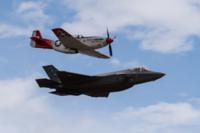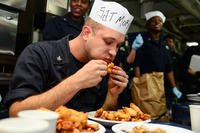Any landing you can walk away from is a good landing.
Capt. Brett DeVries had one of those "good" landings on July 20th when he landed a badly-damaged A-10 Thunderbolt II on the runway at the Alpena Combat Readiness Training Center in Michigan.
The landing gear wouldn't come down. The canopy had been ripped off the aircraft 25 minutes before. The main radio stopped working, along with the first back-up.
This incident is likely the first time in the 40-year history of the A-10 that a pilot landed with the landing gear up and no canopy. The plane was trashed but no one was hurt: Capt. DeVries, his wingman and everyone on the ground came through unscathed.
To this day, I really haven't second guessed anything," said DeVries, who has been flying A-10s with the Michigan Air National Guard for the past seven years. "In that moment, your training kicks in. The training - that's what saves you and your wingman."
Must-See Video: The A-10 Warthog
DeVries flies for the 107th, known as the "Red Devils." On a training flight at Grayling Air Gunnery Range (dropping dummy bombs and conducting strafe runs), DeVries' wingman Major Shannon Vickers reported a "donut of gas" after the plane's 30mm GAU-8 Avenger Gatling-style autocannon malfunctioned. That cause the A-10's canopy to fly off and DeVries slammed his head into the cockpit seat.
Papers were flying around the cockpit and the first two radio systems were shot. There was paneling missing from the underside around the gun. DeVries didn't dare eject because he believed the ejection system had been damaged when the canopy blew.

Capt. Brett DeVries (right) and his wingman Maj. Shannon Vickers, both A-10 pilots of the 107th Fighter Squadron. Vickers helped DeVries safely make an emergency landing July 20 after the A-10 DeVries was flying experienced a malfunction. (U.S. Air National Guard/Terry Atwell)
After consulting with Vickers (using radio system #3), DeVries elected to fly his plane to the Alpena airfield to attempt an emergency landing. A radio consultation with A-10 maintenance specialists at Selfridge ANGB led DeVries to conclude that his landing gear might not fully come down because of the earlier damage and that a belly flop landing would be safer than one where his landing gear wasn't functioning properly.
Designers of the A-10 allowed for the possibility of this kind of landing and it's remarkably well suited to this kind of emergency. The pilot executed flawlessly and came in flat for a smooth landing.
DeVries made such a skilled landing that it's possible that the A-10 might be repaired and return to service. He says he made the landing entirely by instinct: "In that moment, your training kicks in. The training—that's what saves you and your wingman," he said. "Sometimes, perhaps we think, 'Why do we have to do this training again and again?' Well, in this case, the training took over and it is what made the difference."




